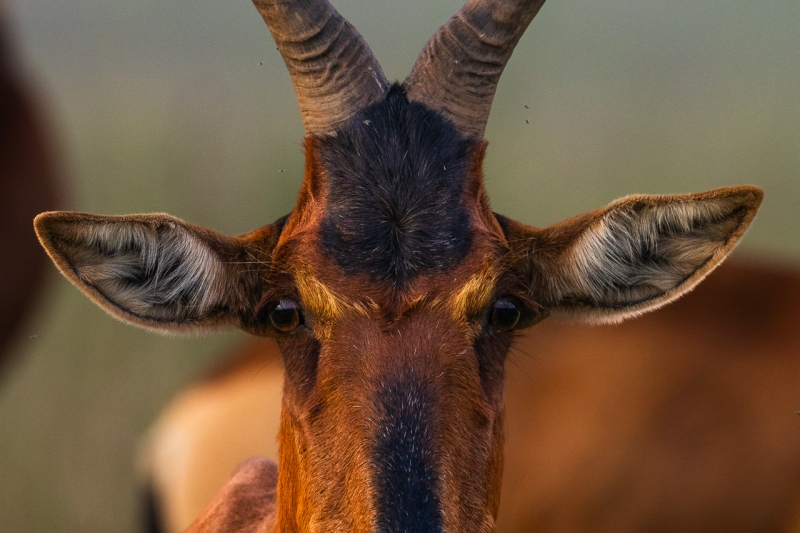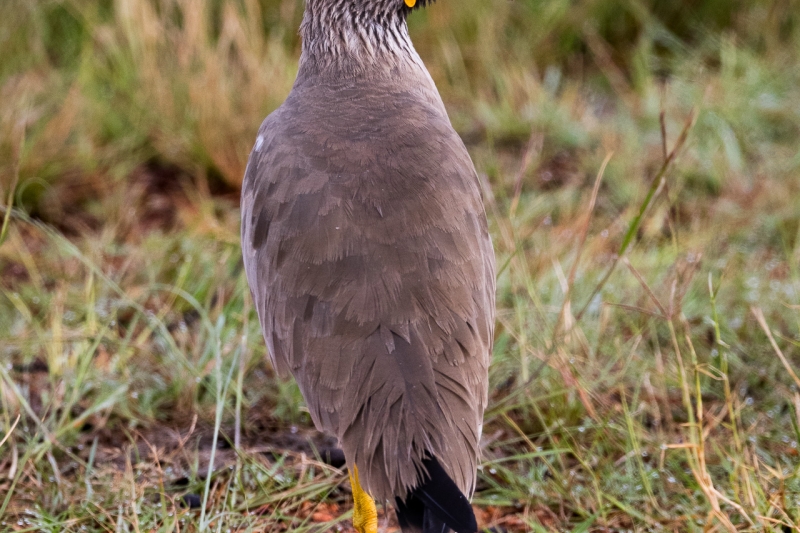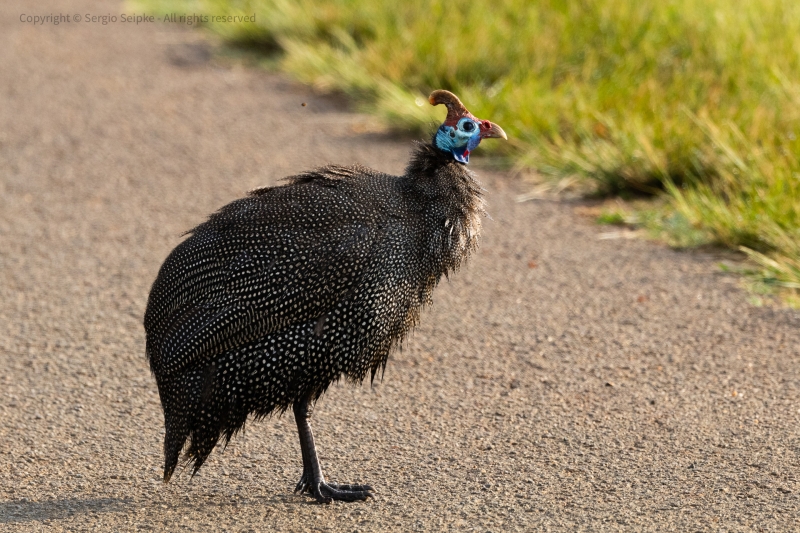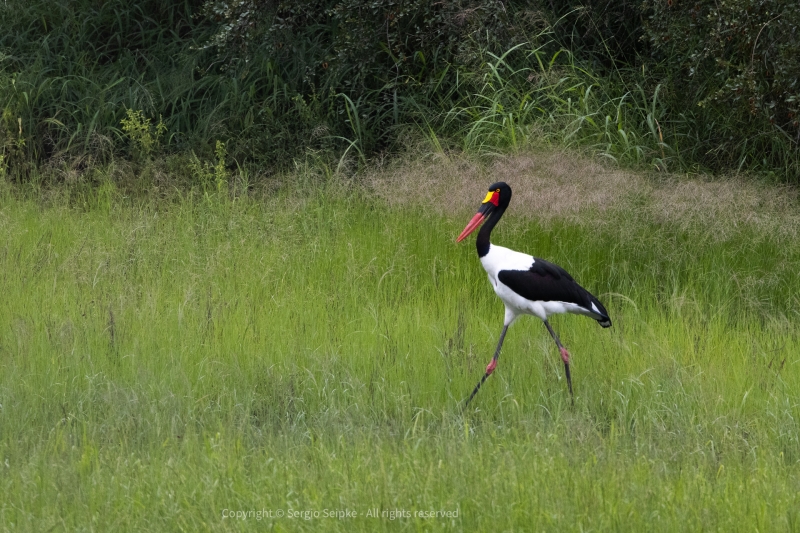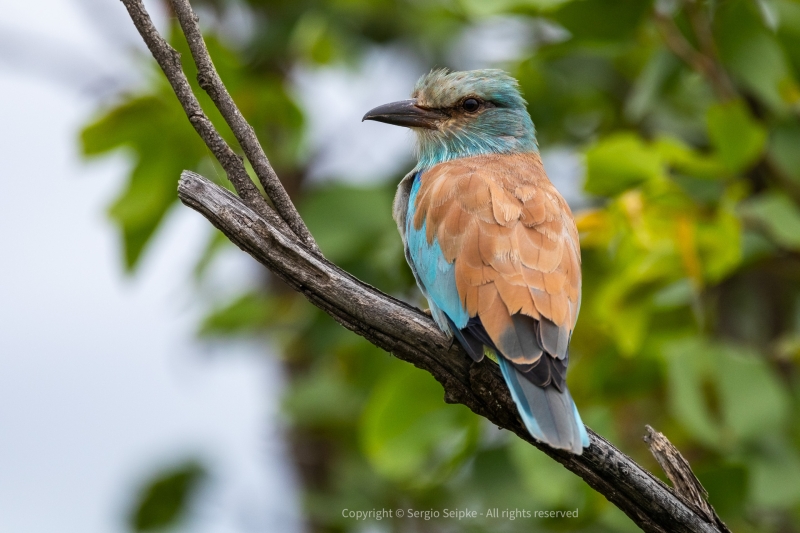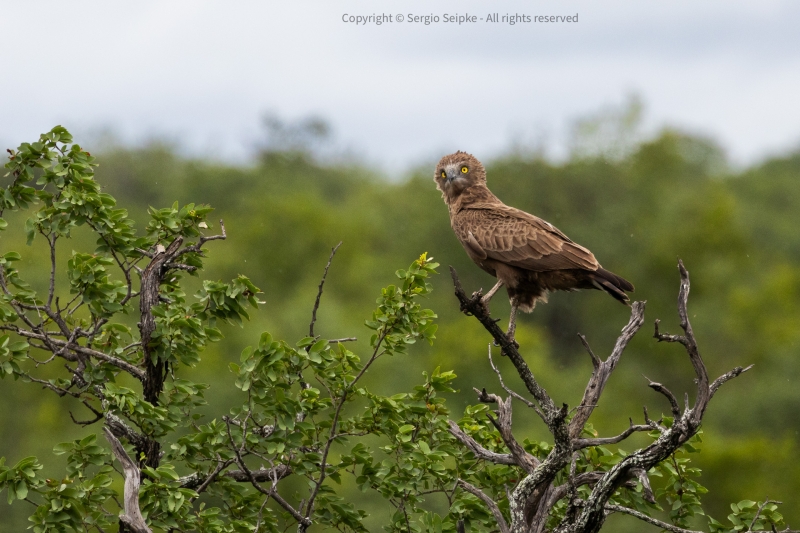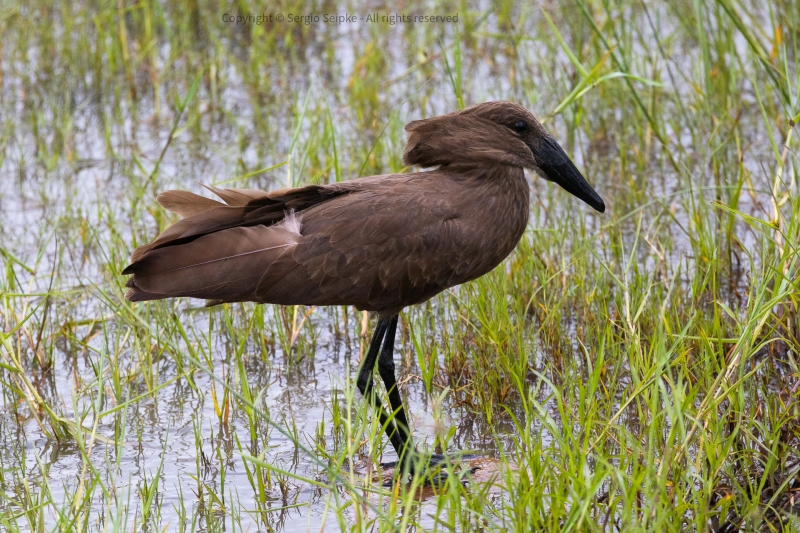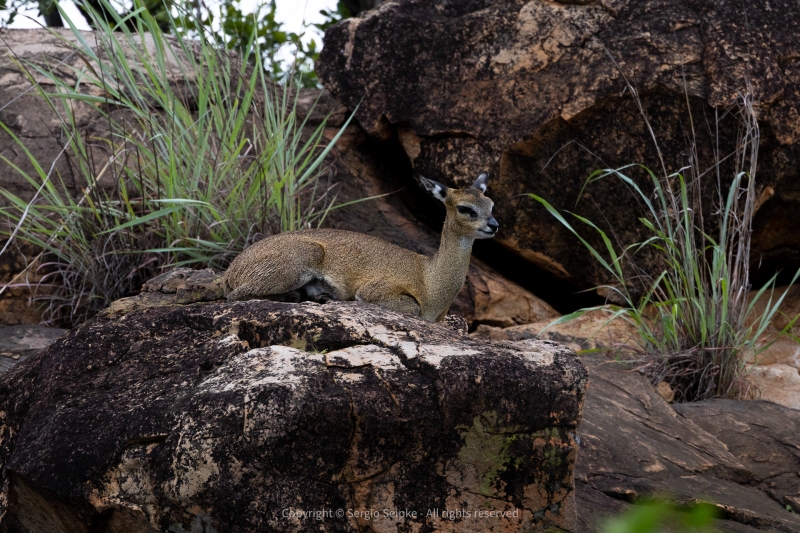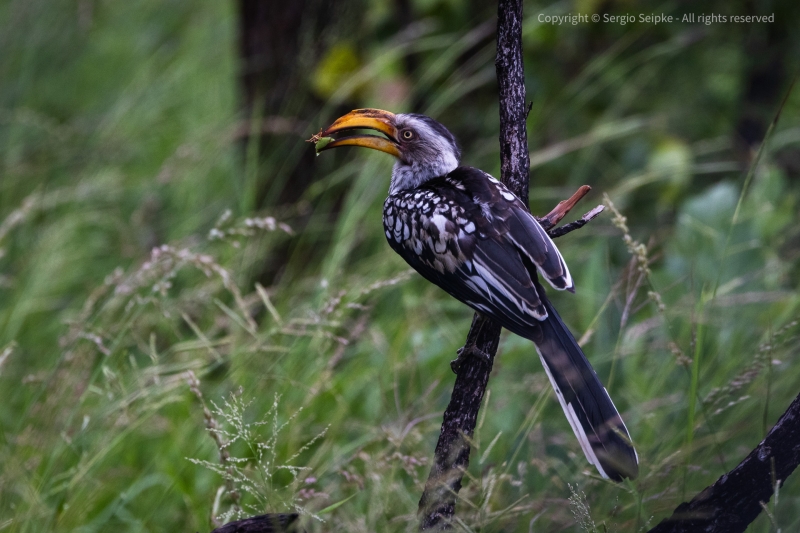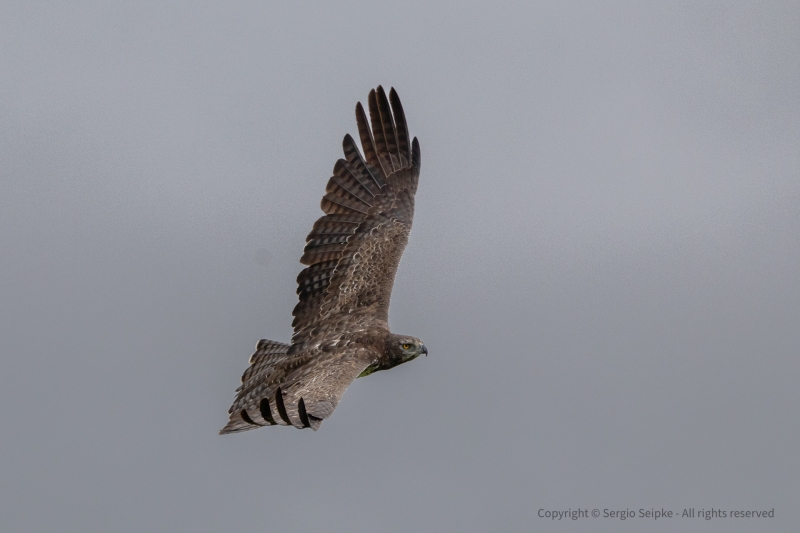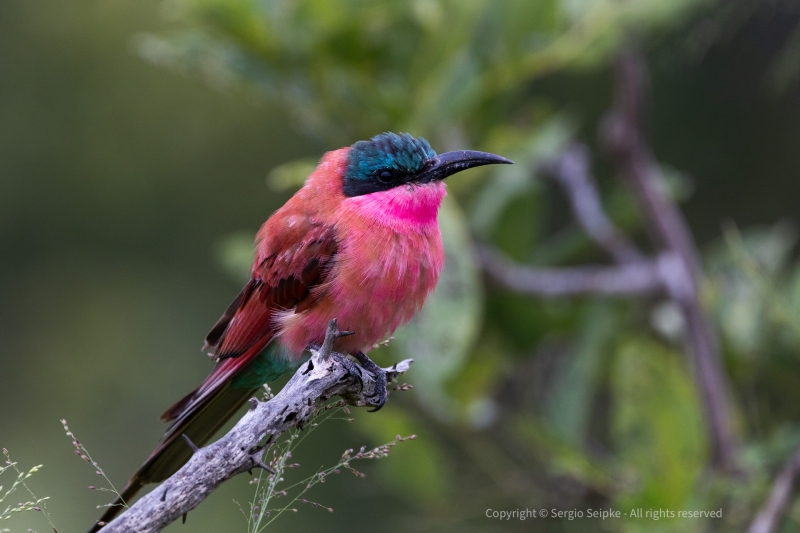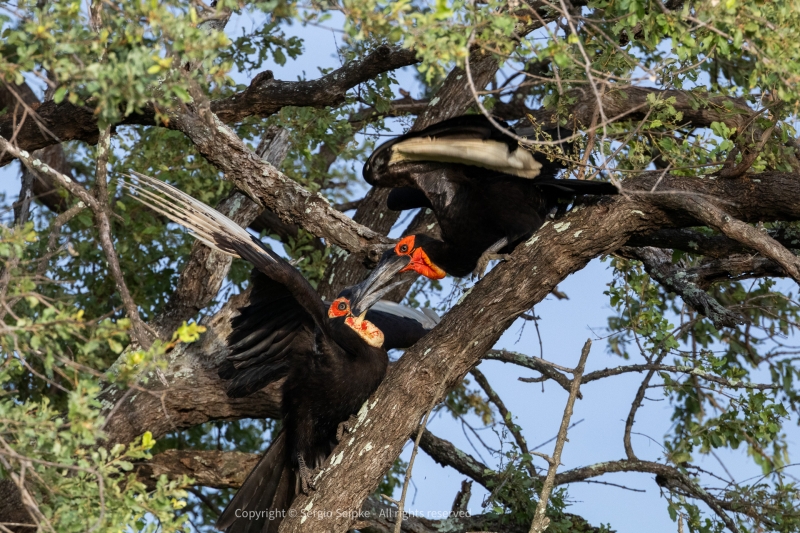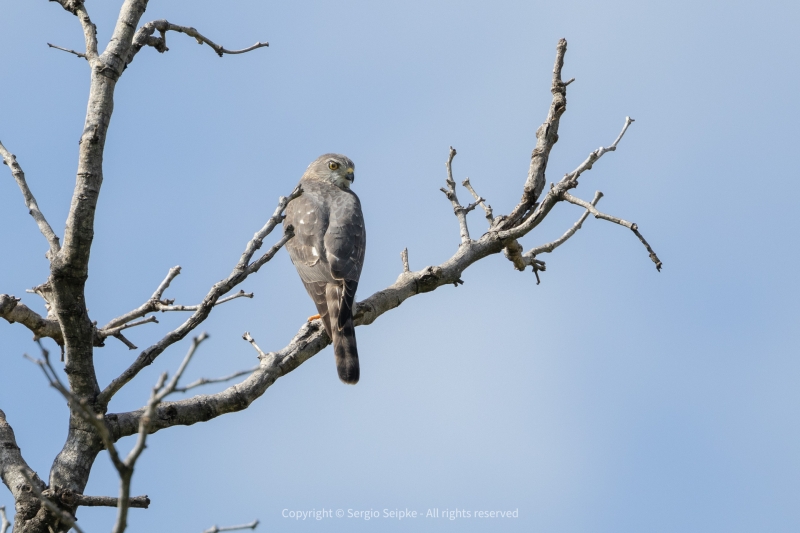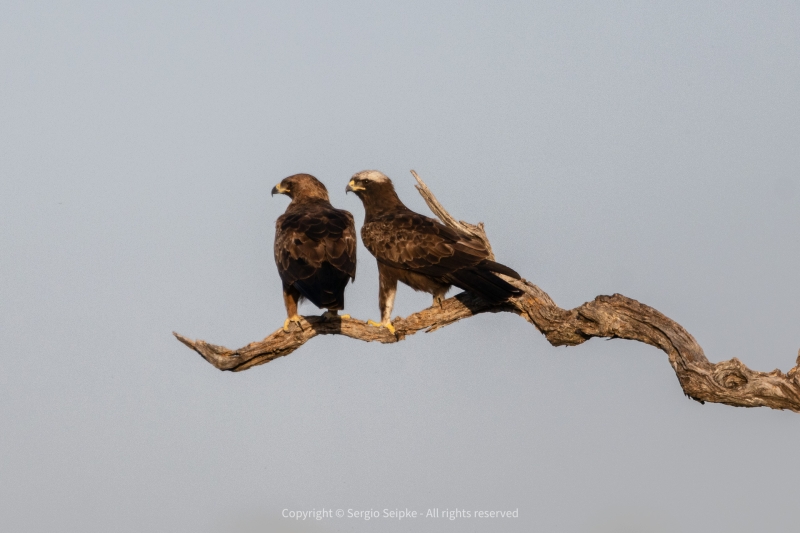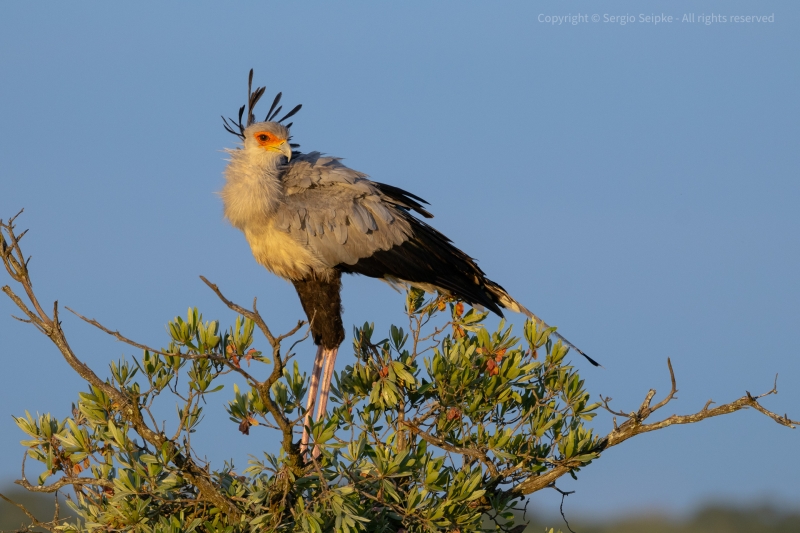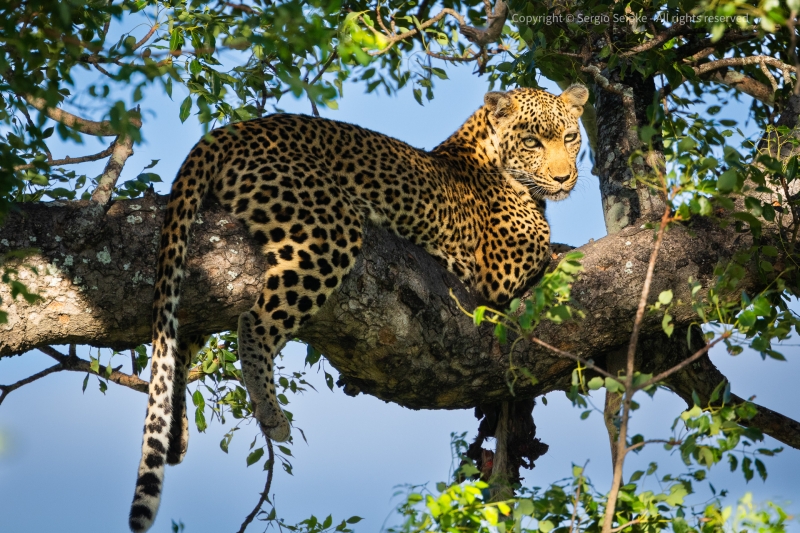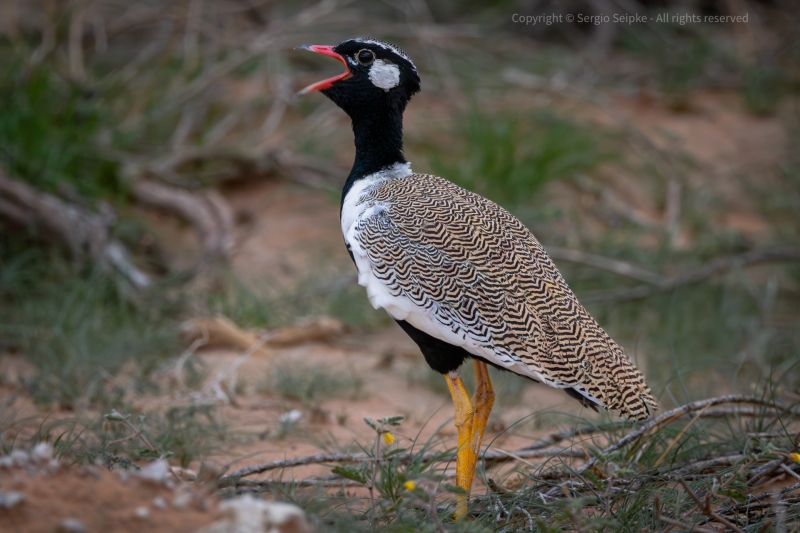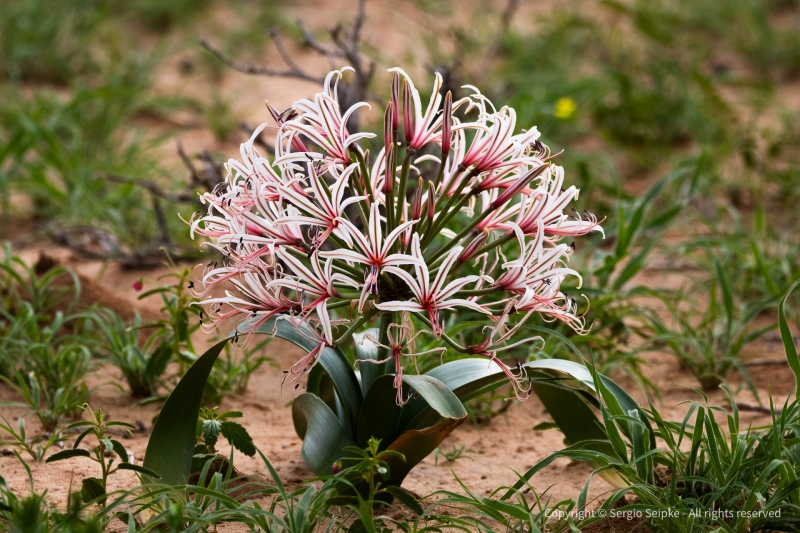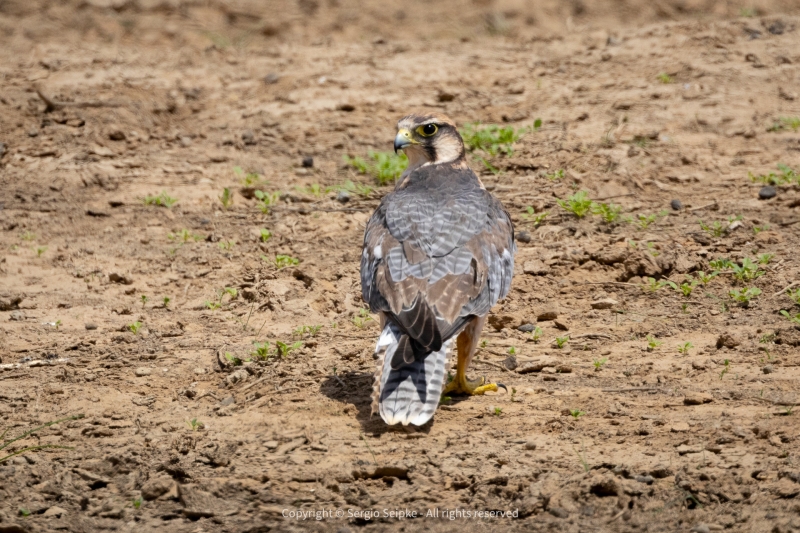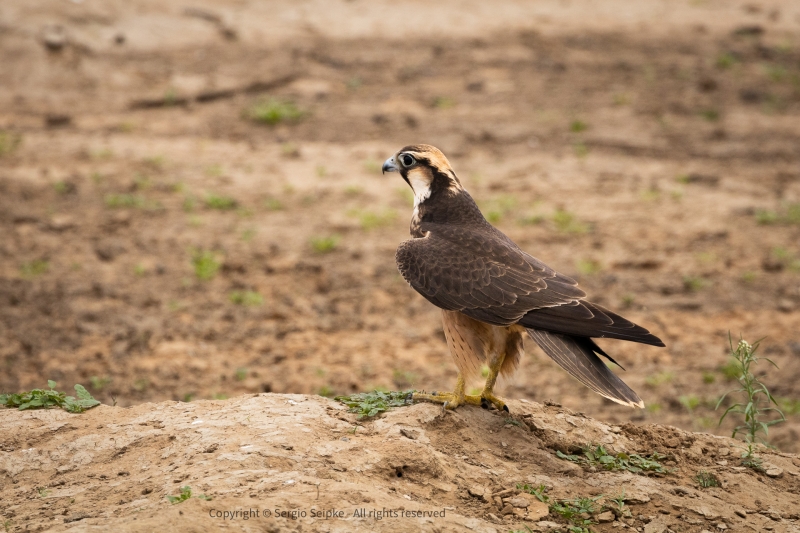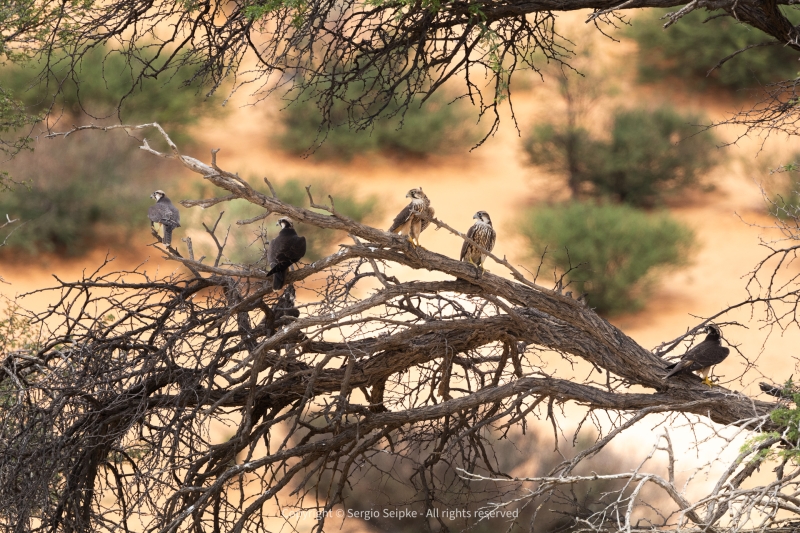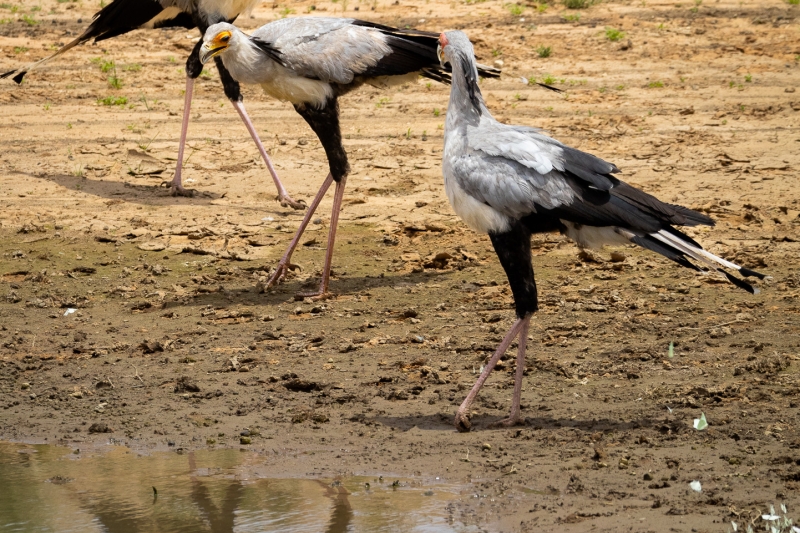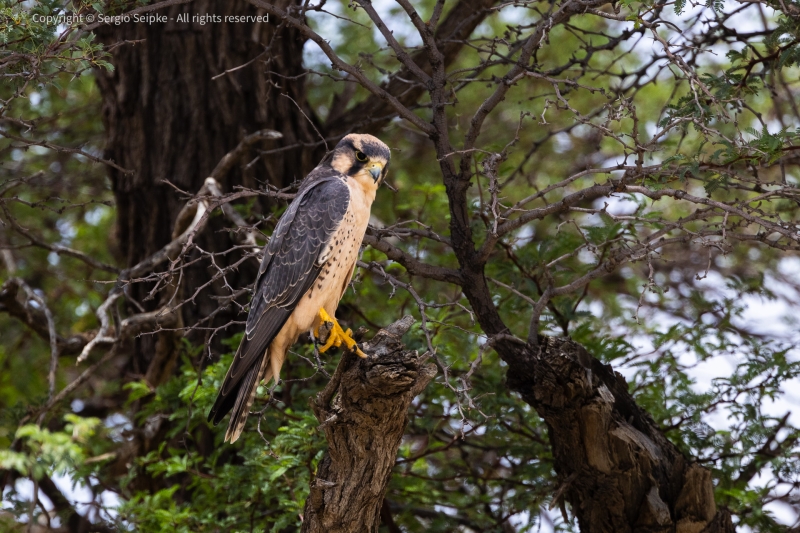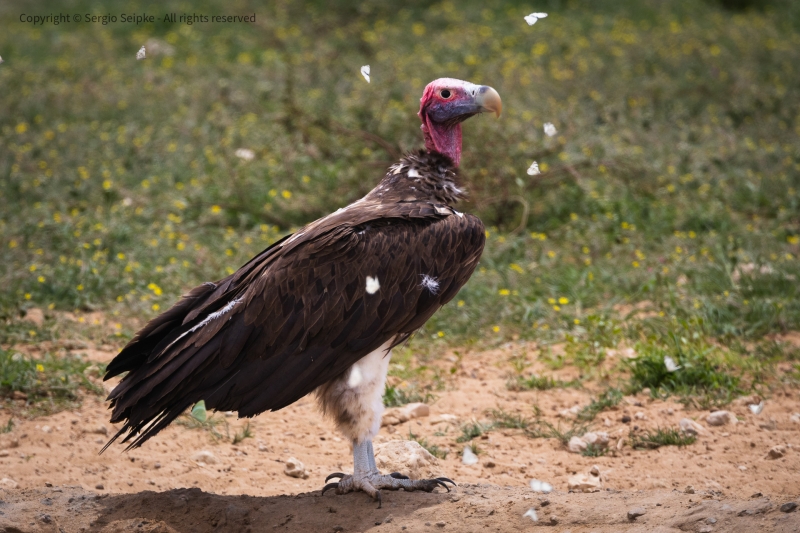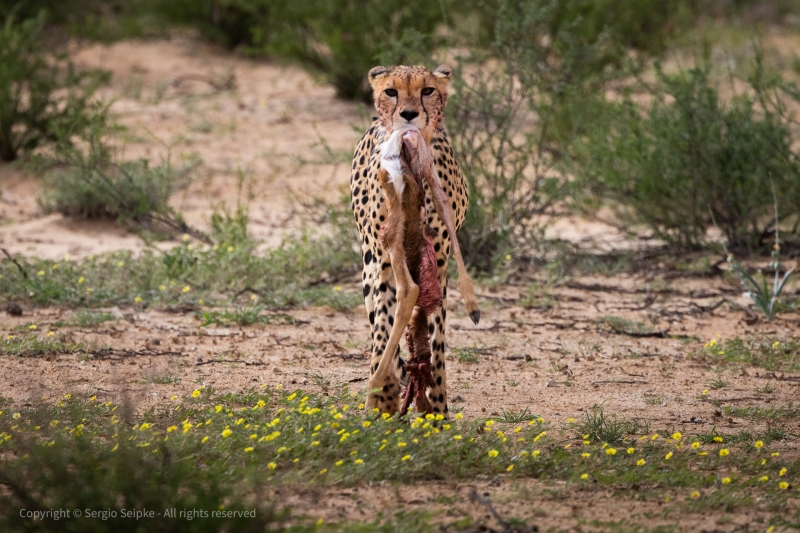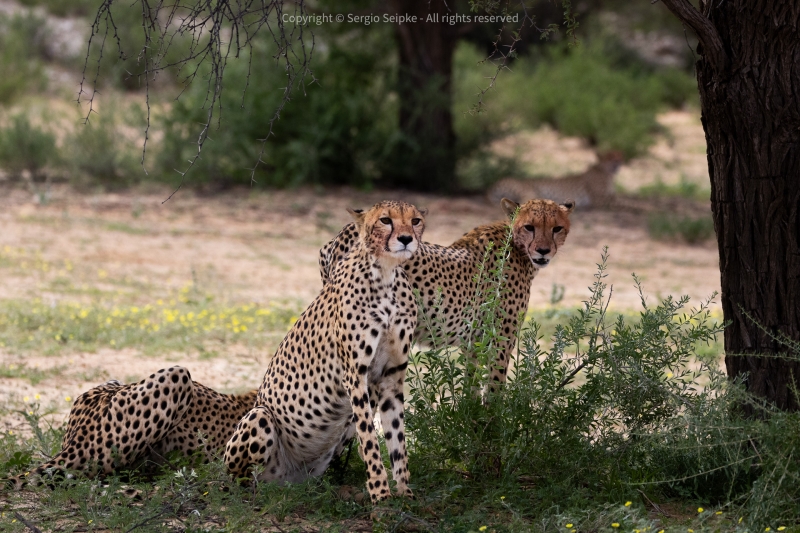2024 South Africa Tour Report
South Africa Raptor Tour Report 2024
by Andre Botha
Shortly after turning back on the tarmac heading south, we finally encountered a very obliging adult Secretarybird perched in a low shrub a mere 30 m from the road. We barely travelled a further two kilometres down the road when a guide in another vehicle pointed out a female Leopard that was lying on a sturdy branch in a marula tree a few metres from the road. It had hauled a Bushbuck ewe up a tree and was feeding on what was left of the carcass allowing saturation-views to all."
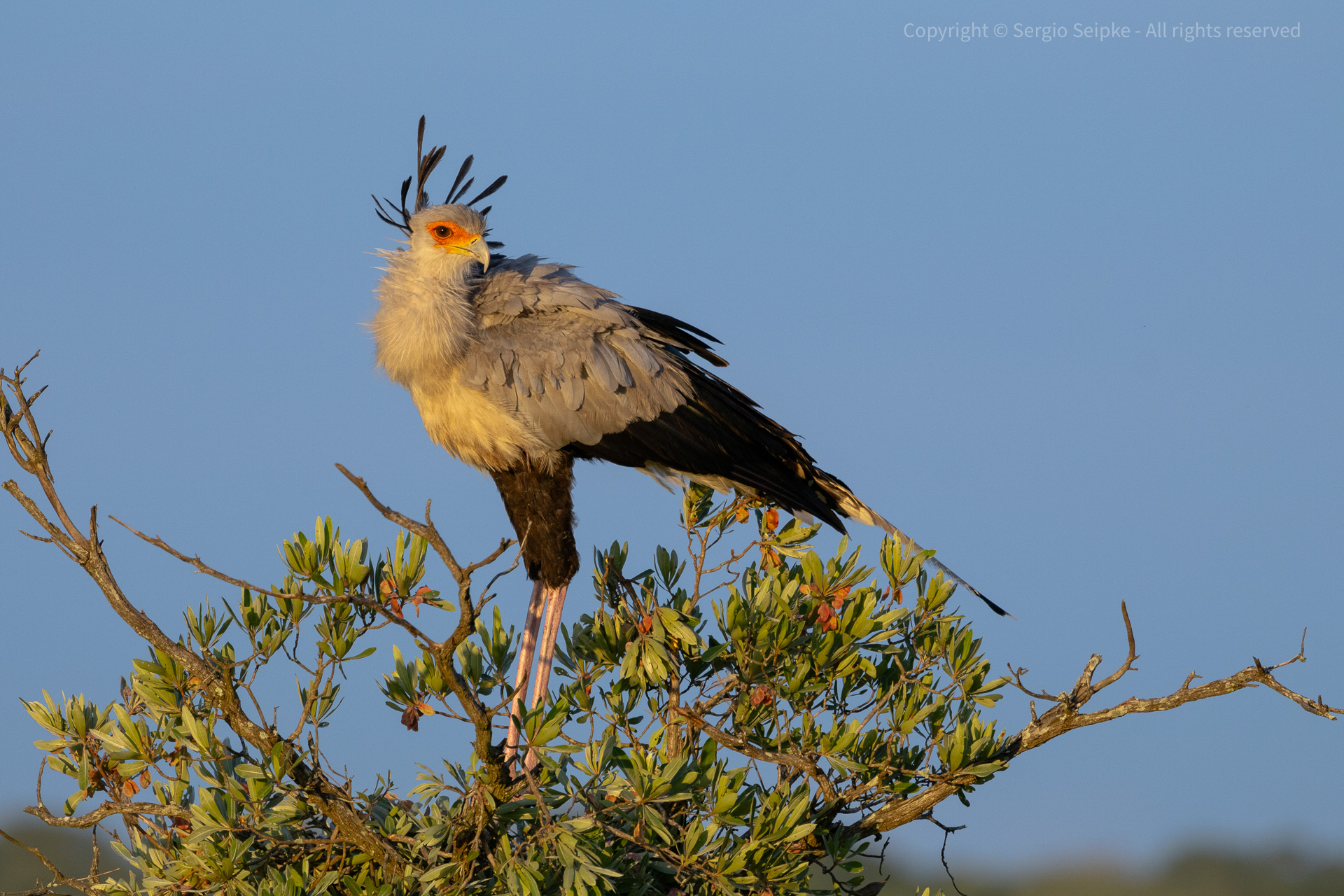
CHECK OUT THE UPDATED EDITION OF THIS TOUR, 18-31 JANUARY 2025
Now expanded to the Indian Ocean's coast to target Palm-nut Vulture, Southern Banded (Fasciated) Snake Eagle, and Sooty Falcon!
Day 1 – Sunday, January 14 - Arrivals
Collected the vehicles from Hertz at 10.00 am. Two white Toyota Quantums in good condition. Checked into the Airport Holiday Inn and met with some members of the group that had already arrived. Once all team members had arrived, we did a briefing and introductory session. Arrangements and departure time agreed for 05.00 am the next morning.
Day 2 – Monday, January 15 – Marievale Bird Sanctuary, Suikerbosrand NR
Departure from the Holiday Inn at 05.00 am and travel to the Marievale Bird Sanctuary southeast of Johannesburg. The Sanctuary is rich in a variety of waterbirds and wildfowl and lists started growing substantially while on the way to the reserve entrance with multiple stops for a range of species. We were also after raptors and managed to find at least one African Marsh Harrier. Other raptors included several Black-shouldered Kite, a Booted Eagle that caused some excitement amongst the waders and waterfowl, and a small number of Amur Falcons.
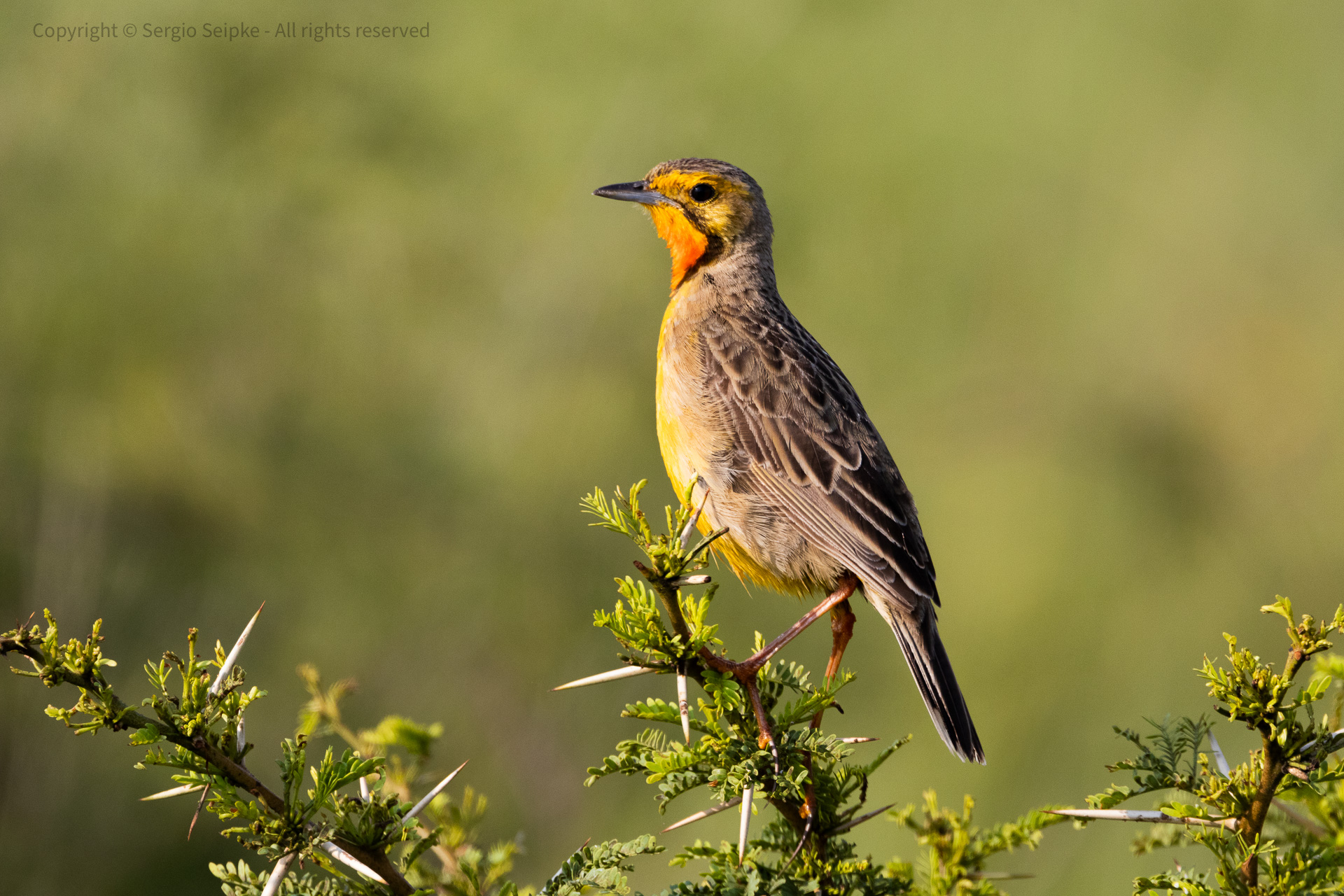
Leaving Marievale, we travelled to Heidelberg where the group enjoyed lunch and did some shopping in preparation for the long drive the next day. From there, we headed to the Suikerbosrand Nature Reserve, but the heat had set in and we decided to return to the hotel as raptor and other bird activity was quite low. Once the group was dropped off at the hotel, we collected a rental trailer from a nearby supplier as the new Quantums do not have sufficient space to carry luggage. As most group members were still suffering from a bit of travel fatigue, we agreed on having an early night.
Day 3 – Tuesday, January 16 – Rietvlei Nature Reserve, University of Pretoria Campus
Departed at 05.15 am for the Rietvlei Nature Reserve and arrived shortly before 05.50 am. Paid the entrance fee and drove into the reserve in the hope of finding some early raptors for the tour list. Our first raptor encounter happened just after passing through the entrance gate when an immature Ovambo Sparrowhawk perched on a snag near the lake was located. The morning was filled with a range of new bird and mammal species being added to people’s lists and we did manage to see a number of Black-winged Kite as well as an adult African Fish Eagle near the man-made lake. A number of Steppe Buzzard was also seen. We also saw a range of mammals on the reserve, such as Burchell’s Zebra, Black Wildebeest, Blesbok, Red Hartebeest, Waterbuck, Springbok, Black-backed Jackal and Yellow Mongoose. Sadly the single Cheetah and the group of White Rhinoceros were elusive on the day.
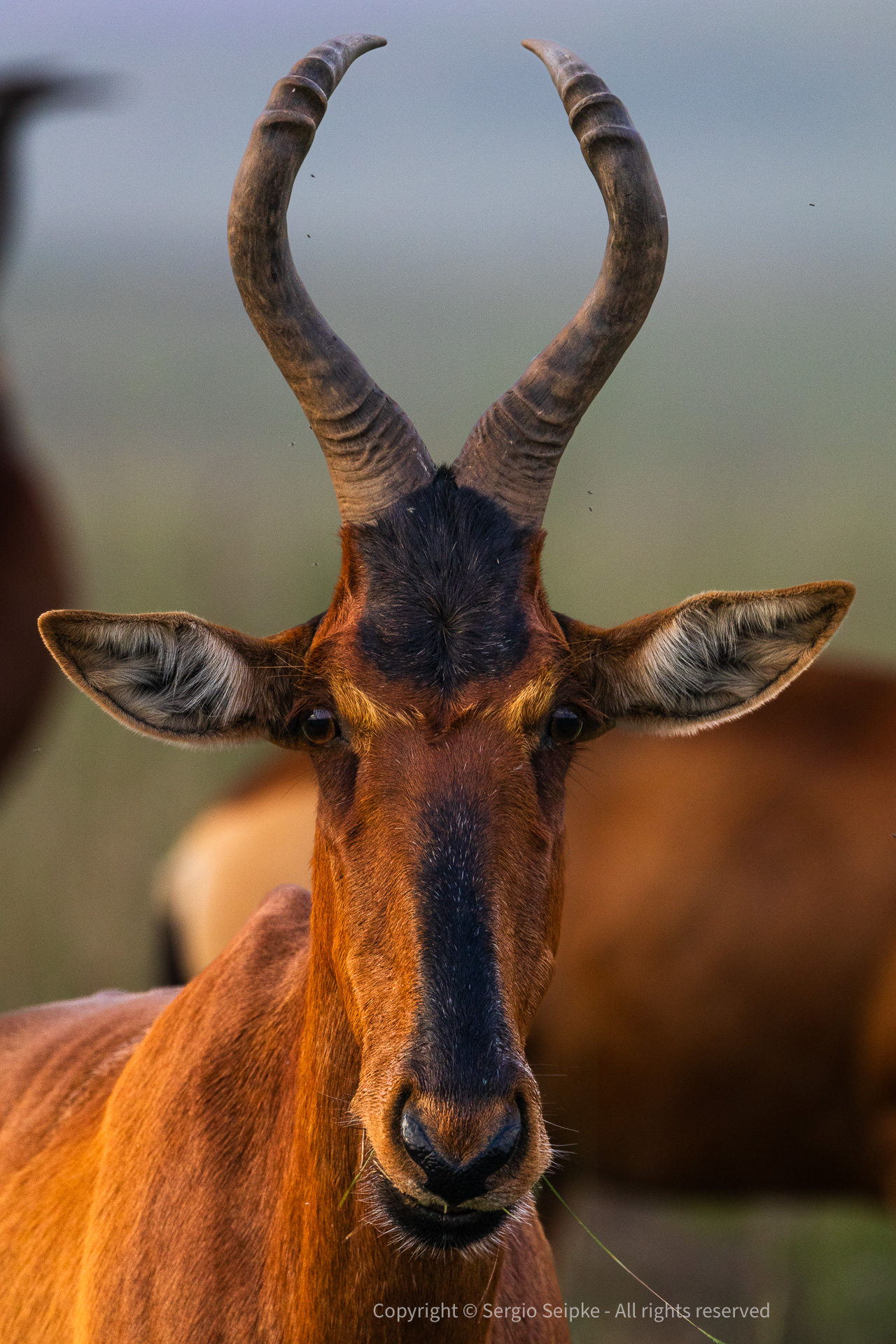
The University of Pretoria was next on the itinerary in search of non-breeding Ayres’Eagle that frequent the area and hunt the many feral pigeons feeding at the agricultural research station. As on our previous two trips here, we were unfortunately unsuccessful, but we did manage excellent views of an adult pair of Verreaux’s Eagles perched on a transmission tower before they took off. Sadly the inclement weather did not assist in our quest and we left the university grounds at 12.00 pm to drive down to the Lowveld.
We finally arrived at Raptor’s Lodge just before dark after a long afternoon on the road which included a stop at the Alzu Pertroport where the group had their first, and only, views of White Rhino. Raptors on the route to the Lowveld included good numbers of Steppe Buzzard and first sightings of Jackal Buzzard and Long-crested Eagle. A quick stop near a transmission line revealed as many as 28 Cape Vultures perched on three pylons near the Manoutsa breeding colony once we had descended into the Lowveld.
Day 4 – Wednesday, January 17 – Hoedspruit, Moholoholo Rehabilitation Centre, and Magoebaskloof
We woke up to pouring rain that put paid to our birding-plans for the morning which would have included a visit to the historical Taita Falcon site at the Strijdom-tunnel. It was agreed to visit one of the local restaurants where the group could enjoy a sit-down breakfast until the weather lifted at 09.00 am. we decided to head towards the Moholoholo Rehabilitation Centre where the group participated in a guided tour of the facilities and was also granted special permission to enter two of the vulture/raptor enclosures for close-up experiences with a range of species.
We returned to Hoedspruit to check out of our accommodation and then travelled to Magoebaskloof via Tzaneen, mostly travelling in the rain. After checking in at the hotel, the weather lifted again allowing most of the group to go for a walk on a dirt track nearby where we added a number of bird species to the lists. This was followed by another early night after dinner at the hotel. Some group members followed up on and heard the call of Buff-spotted Flufftail from the forest patch bordering the hotel grounds.
Day 5 – Thursday, January 18 – Magoebaskloof, Kruger National Park
Waking up to more rain and mist, it was agreed to not attempt birding on the muddy track up to the montane forest and we drove to Tzaneen where the group enjoyed breakfast and were able to do some shopping before we travelled to Phalaborwa entrance gate to the Kruger National Park. An interesting observation along the way was a sighting of an adult female Saddle-billed Stork in a small seasonal pan about 40 km from Phalaborwa.
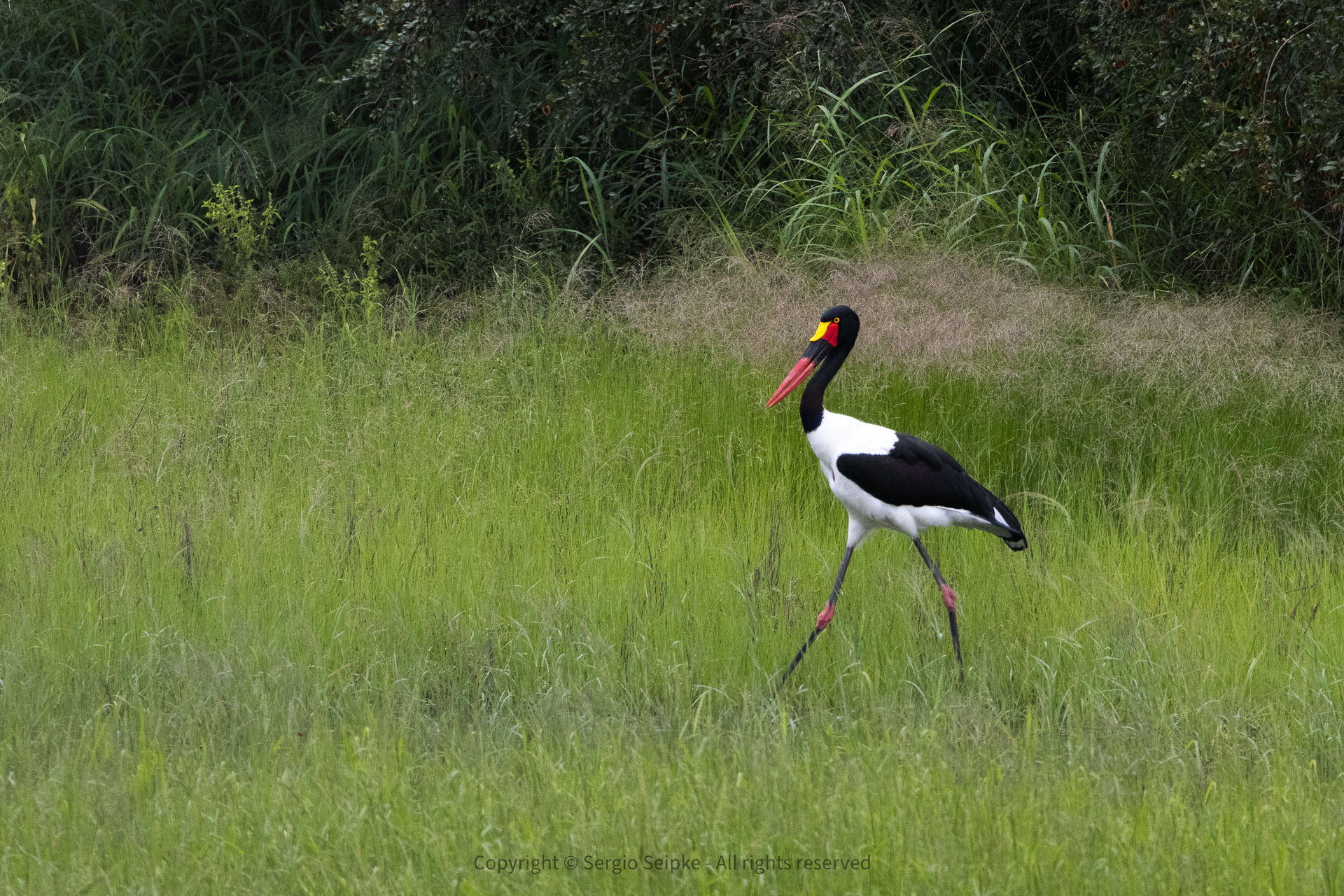
The rain had subsided by the time we entered the Kruger, but a blustery wind and cool conditions prevailed all the way to our base for the next three nights, Punda Maria rest camp. A range of raptors and other interesting bird and mammals species were however seen along the route. Raptors such as Bateleur, Brown Snake Eagle, African Hawk-Eagle, and Tawny Eagle were added to the list and a small congregation of Red-billed Quelea nest-building in scrub north of Shingwedzi also produced an exciting encounter with what was believed to have been an African Hobby doing several stoops, trying to catch some of the quelea.
Day 6 – Friday, January 19 – Pafuri-Punda Maria, Kruger National Park
Heading out at 04.30 am in the dark, we drove towards the Pafuri-region with the primary target being the Dickinson’s Kestrel. Sightings on the way to Pafuri included Martial Eagle, Tawny Eagle, and a scattering of Amur Falcons. Pafuri itself produced a range of birds limited in their distribution in South Africa to the north of Kruger such as Meve’s Starling and Tropical Boubou. We also encountered a kettle of more than 30 African White-backed Vultures circling with even more birds perched on the ground near the road at a feeding event. We were not able to determine what the birds were feeding on.
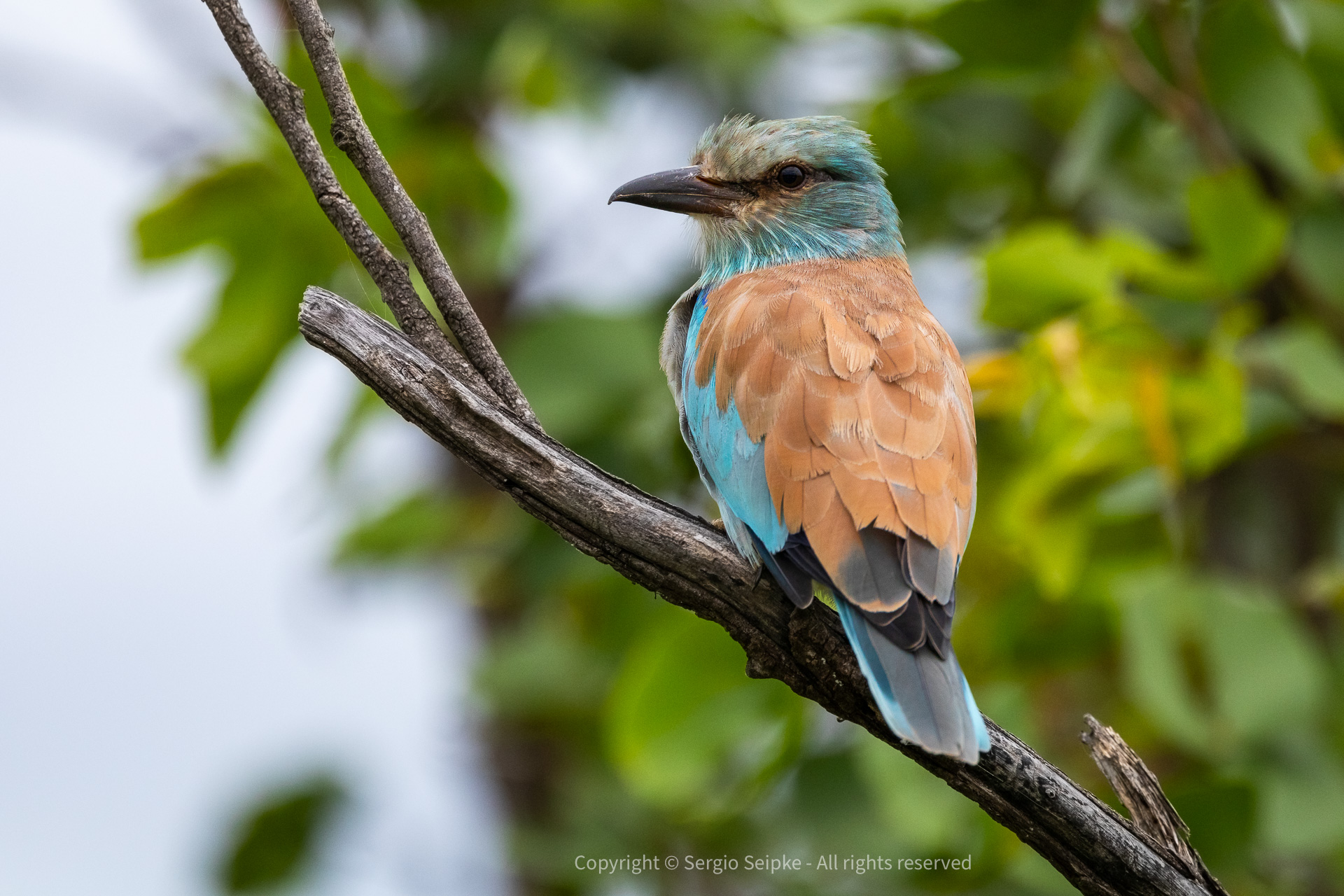
Heading back to Punda Maria, we again scanned the air and vegetation for our target bird and were fortunate to obtain some in-flight views of a birds crossing the road and eventually disappearing over the horizon, enabling most to at least get a glimpse of the bird and which completed Bud Anderson’s world list of falcons seen. Celebrations were to follow later that evening.
After returning to Punda Maria and a late lunch, some group members went out for a short drive along the Mahonie-loop, the most memorable encounter being that with a grumpy bull elephant that took umbrage to our use of the road!
Day 7 – Saturday, January 20 – Northern Kruger National Park
It was agreed that we would return to the Pafuri-area in the hope of obtaining better views of Dickinson’s Kestrel and we again departed at 04.30 am. We spent quite some time on the Luvhuvhu river bridge from where we had sightings of species such as African White-backed Vulture, Bateleur, Wahlberg’s, and Tawny Eagle. Another highlight included good views of Böhm’s Spinetail. We drove towards the Thulamela cultural site which used to be a reliable site for the kestrel, but were disappointed to find that it was no longer accessible to the public.
An earlier return to Punda Maria enabled us to also drive the entire Mahonie-loop in the afternoon with a very shy African Goshawk being the raptor-highlight of the drive. We also had views of at least two Eurasian Hobbies towards the end of the loop.
Day 8 – Sunday, January 21 – Punda Maria to Shingwedzi and Letaba
Turning south, we again departed early, this time taking the main road towards Shingwedzi. Along the way, we had excellent sightings of a range of raptors and other birds including several Lesser Spotted Eagles and more Amur Falcons. A group of Southern Ground Hornbills in a large tree next to the road near the Babalala Picnic also showed well and provided good photographic opportunities as did a number of Kori Bustard.
We turned off the main road to follow the road along the Mphongolo-river for about 90 minutes and had good views of a range of raptors such as Peregrine Falcon, Wahlberg’s Eagle, African Hawk Eagle, Tawny Eagle, and a number of African Fish Eagles. Shingwedzi was a welcome stop to stretch the legs and have a late breakfast, but there were numerous sightings of raptors from the main complex while a male Bennett’s Woodpecker also showed well for some group members.
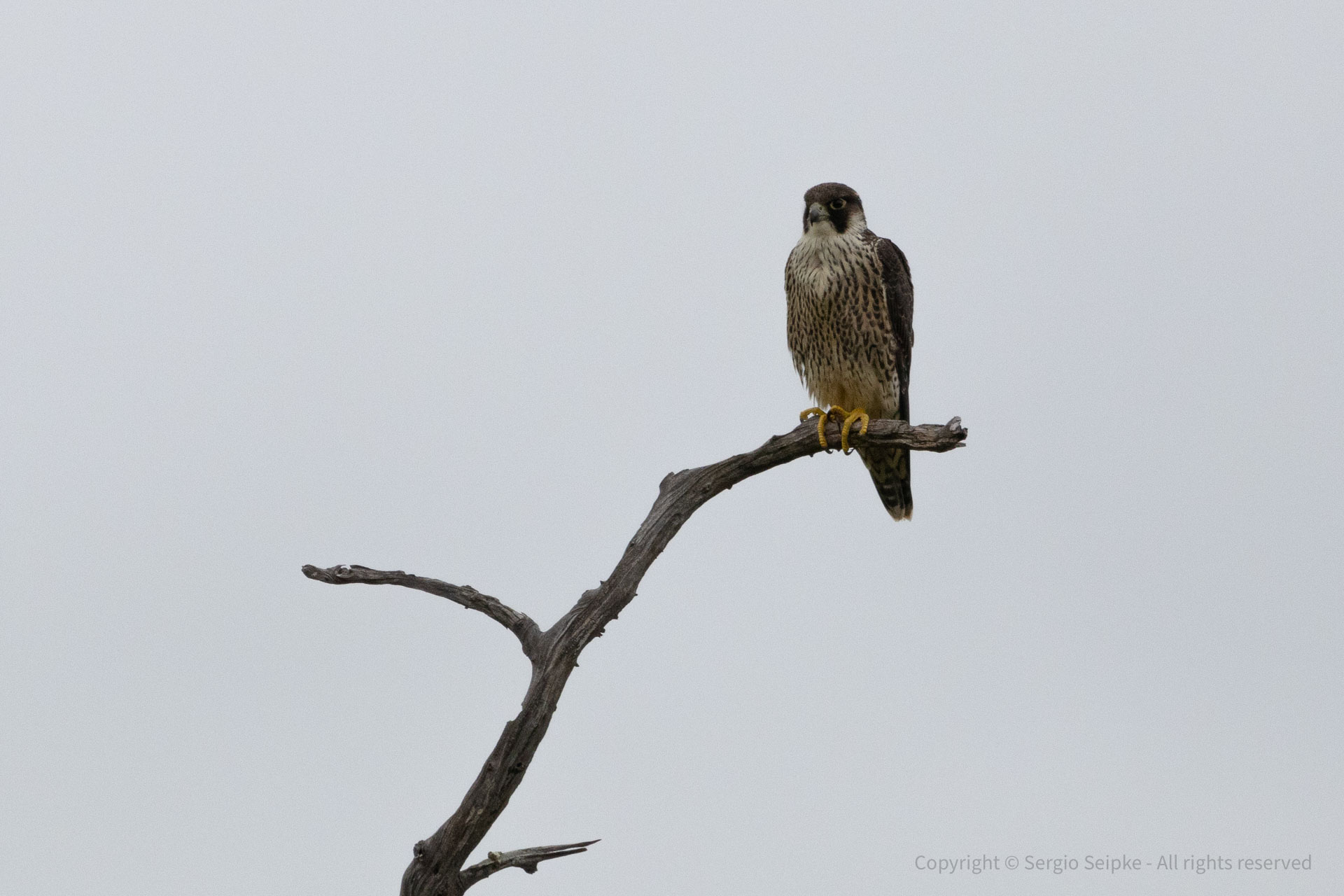
Once back on the road, we continued south towards Letaba, but not before stopping at the Tropic of Capricorn landmark for a group-photo and then again turning off the main road to drive the loop named after this geographical landmark. What followed was a rather magical couple of hours as we slowly crawled along the road that traverses more open habitat with lush green grass after the good rain. The group were amazed by the 300+ elephants and more than 2,000 Burchell’s Zebra and Blue Wildebeest that frequented this area accompanied by a number of White Stork and Kori Bustards. Truly a remarkable experience.
We eventually arrived at Letaba to check in at reception and some group members departed on a pre-arranged night drive at 5.00 pm. This drive produced the first African Lion of the trip when a group of 4 animals were seen well and photographed.
Day 9 – Monday, January 22 – Letaba to Skukuza, Kruger National Park
Another early departure saw us heading further south to cross the Olifants river towards Satara and Skukuza. We spent some time at the lookout over the river and on the high-water bridge where we were able to get out and stretch our legs. An excellent sighting of the well-known pair of Wahlberg’s Eagles that nest near the bridge was enjoyed by all. The change in vegetation once we had crossed the Olifants river was obvious and game viewing improved accordingly. Some group members had a brief glimpse of two Lions seemingly stalking some Impala and Warthogs, but they moved away from the road and out of sight. About 10 km further south, another trip highlight in the form of a sizeable Black Mamba that slithered across the road, presented itself.
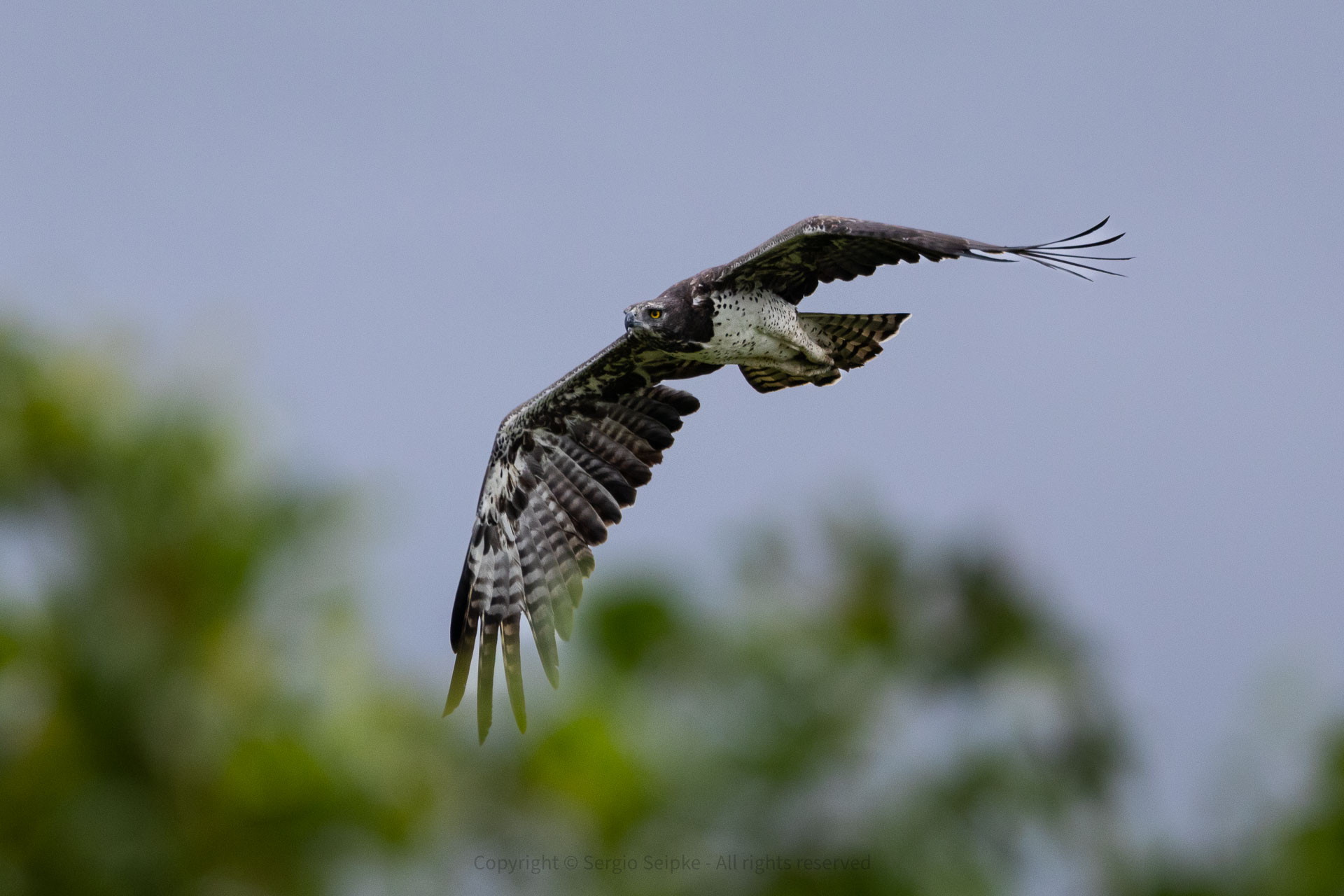
Near Mondzo, we enjoyed our first views of a Montagu’s Harrier female and hovering Lesser Kestrels. Also seen were a number of Bateleur and we then saw four species of vultures: Lappet-faced-, Hooded-, White-headed- and African White-backed, circling above us before some of the group landed out of sight, probably at a feeding opportunity. As one of the group members remarked, we enjoyed quite an airshow with raptors all around! There was also some excitement when Emily spotted a single Cheetah sitting in the grass about 40 m from the road. Everyone were able to have a look before it lay down in the tall grass and disappeared from view.
After a stop for brunch at Satara, we travelled further south to Tshowkane and enjoyed sightings of several more raptors. A quick detour to the Nkumbe look-out enabled us to have great views over southern Kruger, but sadly, no rhino were spotted from here. Travelling towards Skukuza, vehicle traffic also became gradually more busy and we arrived at the camp in the late afternoon.
Day 10 – Tuesday, January 23 – Skukuza, Kruger National Park to Newcastle
As there was quite a bit of traffic when we departed from Skukuza, it was decided to take one of the dirt tracks to Renosterkoppies. This decision was soon rewarded by a sighting of an adult male Lion who approached the vehicles and calmly passed us before turning to spray-mark the trailer attached to the second van!
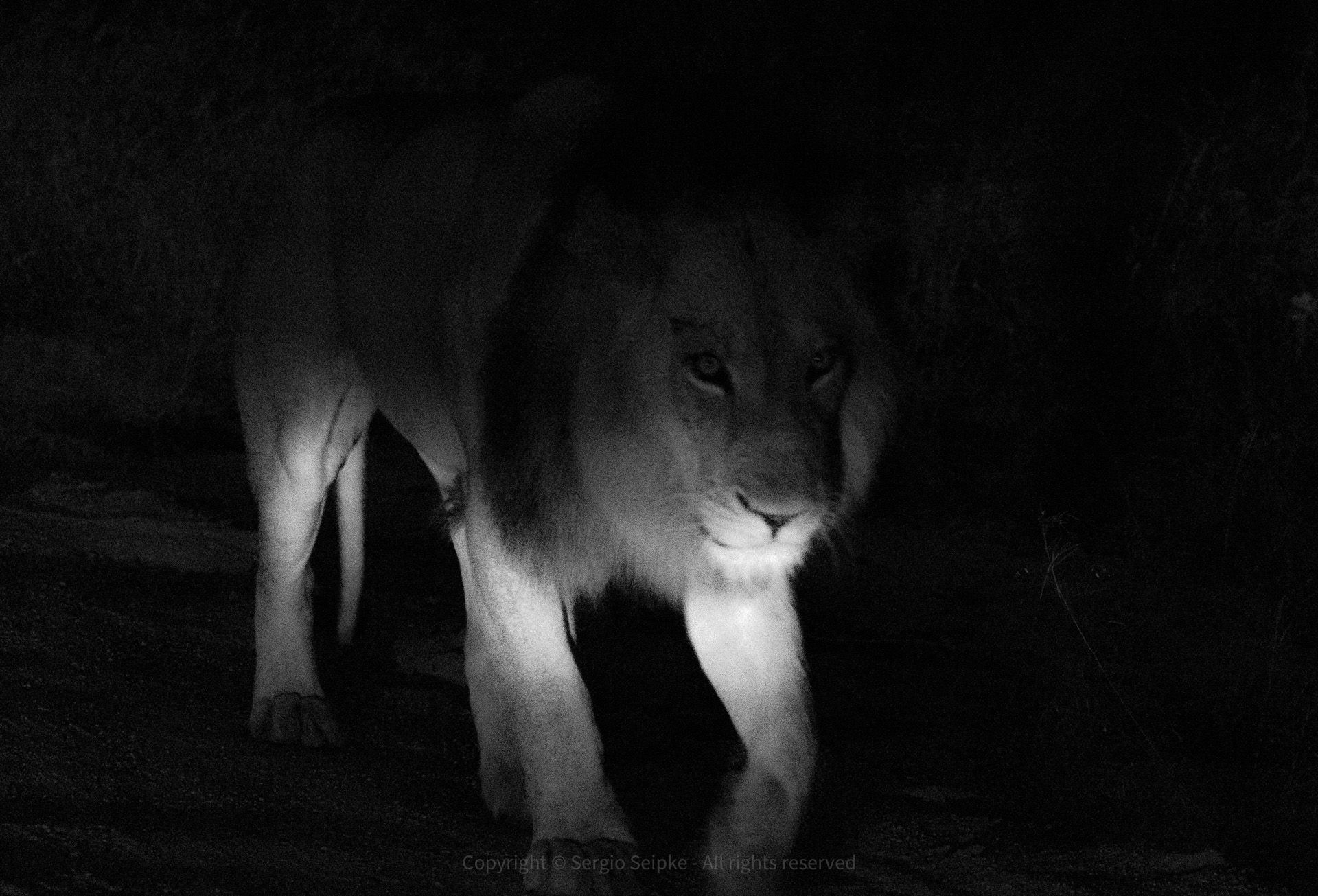
Shortly after turning back on the tarmac heading south, we finally encountered a very obliging adult Secretarybird perched in a low shrub a mere 30 m from the road. We barely travelled a further two kilometres down the road when a guide in another vehicle pointed out a female Leopard that was lying on a sturdy branch in a marula tree a few metres from the road. It had hauled a Bushbuck ewe up a tree and was feeding on what was left of the carcass allowing saturation-views to all. The rest of the drive to the Malelane gate to exit the Kruger National Park was fairly uneventful and we started the long drive to Newcastle via Barberton, and Ermelo. Another dramatic change in scenery and vegetation as we proceeded through the eastern grasslands where raptor sightings were dominated by Steppe Buzzard, Black-winged Kite and a few Amur Falcons, mostly perched on poles or lines on the side of the road.
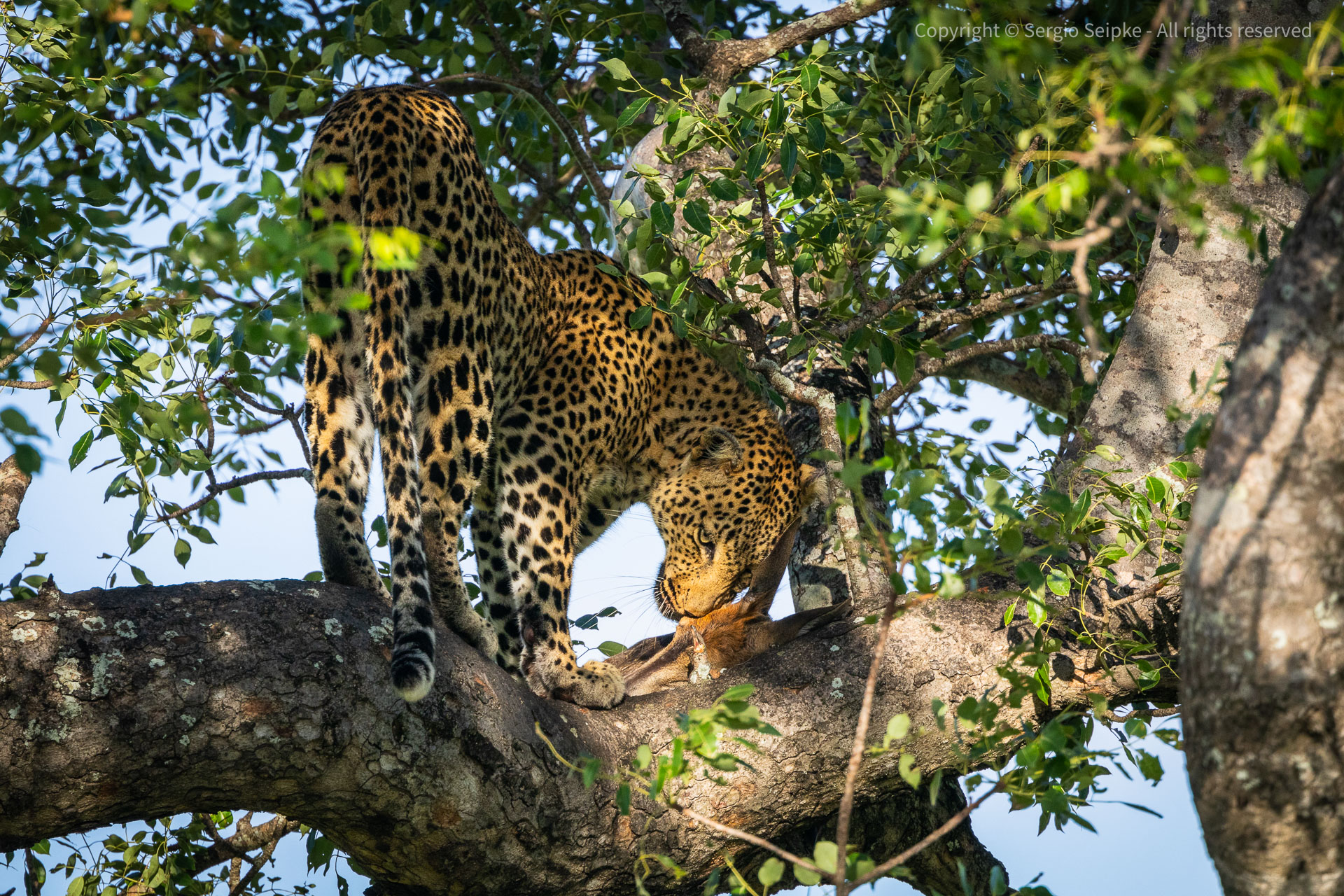
After lunch in Ermelo, it was agreed to take a detour through the Wakkerstroom grasslands where we encountered species such as Southern Bald Ibis, Greywing Francolin, Grey Crowned Crane and Blue Crane. We arrived at Newcastle before fark and the group had time to check in before gathering on the lawn in front of our hotel to observe the roosting Amur Falcons congregating before roosting in the tall trees in the middle of town just after dark. We estimated between 2,500–4,000 Amur Falcons came in to roost on the night.
Day 11 – Wednesday, January 24 – Newcastle to Johannesburg to Upington to Kgalagadi
A long day of road- and air travel from KZN to Gauteng to the Northern Cape and Kgalagadi TFCA. We left Newcastle and drove via Standerton to Johannesburg and the OR Thambo airport from where we took a flight to Uoington. A small range of raptors were seen typical of the grasslands, such as Black-winged Kite, Steppe Buzzard and Amur Falcons. The group checked in for the flight while the vehicles used were returned to Hertz.
After landing at Upington airport, we managed to change rental companies after Hertz was not able to provide the vehicles originally booked. After luggage was loaded, we headed into town so that the group could purchase supplies for the two days in the Kgalagadi TFCA. Once this was done, we drove the almost 300 km north to Twee Rivieren. Due to the heat, raptor sightings were few and far between, but we did manage sightings of our first Southern Pale Chanting Goshawk, Greater Kestrel and a brief glimpse of Pygmy Falcon near a sizeable Sociable Weaver nest. We made a quick pit-stop at Ashkam for snacks before covering the last few kms to Twee Rivieren, but stopped on the way at a large Sociable Weaver nest to show the group what such an avian apartment building looks like and also pointed out the characteristics of a couple of Pygmy Falcon nesting holes in the structure.
After checking in at Twee Rivieren and off-loading our luggage, some members of the group drove out towards Samevloeiing waterhole to get a first glimpse of the Kgalagadi TFCA. There wasn’t much to see at the waterhole, but highiights on the way back to camp included sightings of a calling Northern Black Korhaan, another view of a perched Pygmy Falcon as well as a rather annoyed Cape Cobra that crossed the road near camp.
Day 12 – Thursday, January 25 – Kgalagadi Transfrontier Park
We started the day about an hour later than in the east of the country by driving across the dunes to the Auob river which we followed until turning east just beyond Auchterlonie. Sightings included another pair of Pygmy Falcon basking in the early morning rays of the sun, a couple of immature Lanner Flacon and a displaying Kori Bustard male in the riverbed. We also saw several flocks of Namaqua Sandgrouse arriving at the waterhole from the lookout at Auchterlonie. A rather uneventful drive across the dunes to the Nossob river produced a single pair of Secretarybird foraging before disappearing over a dune. Mammal sightings included several groups of Gemsbok (Oryx), herds of Springbok and Black-backed Jackal.
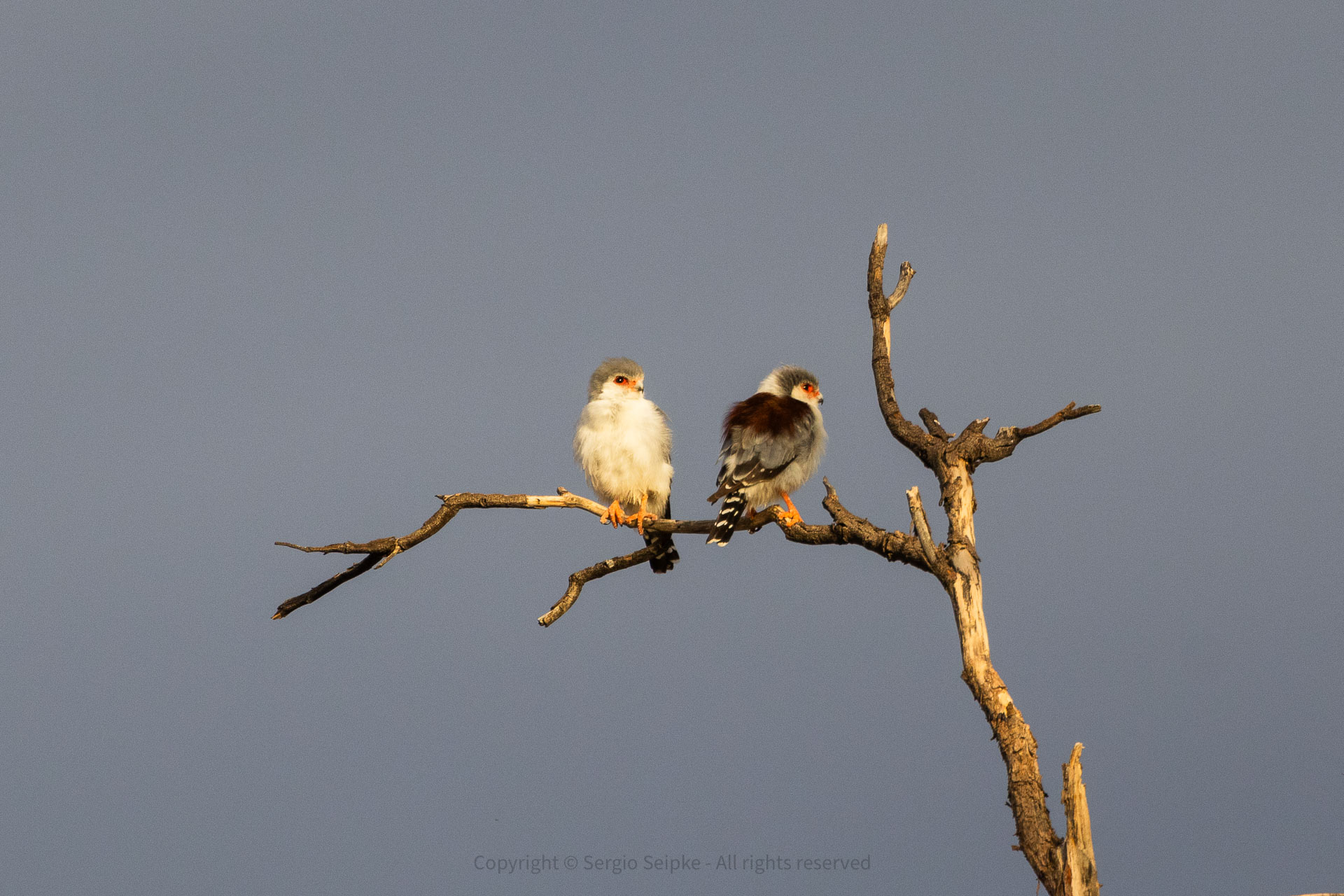
Once we reached the Nossob-river, we turned north to the Kij Kij waterhole which usually attracts a fair number of raptors and other birds by mid-morning and were treated to a spectacle of not less than 32 Lanner Flacons of varying ages perched, flying, swooping, walking and drinking in the area. They were joined by as many as seven Secretarybirds who arrived individually or in pairs, drank and then left again. After spending more than an hour in this area, we turned south after hearing about a lion sighting not too far from our location. We found the three males panting in the shade of a large Camelthorn and who provided some photographic opportunities. Driving further south, an alert group of Gemsbok assisted us in locating a single Cheetah also resting in the shade of another tree. We arrived back at Twee Rivieren at 12.30 pm for lunch and a welcome siesta.
A late afternoon drive produced more Lanner Falcon, Southern Pale Chanting Goshawk, and at least two sightings of Tawny Eagle. We again enjoyed dinner in the camp restaurant that evening before heading off to bed.
Day 13 – Friday, January 26 – Kgalagadi Transfrontier Park
It was decided to drive north along the Nossob river, hoping for a repeat of the Lanner Falcon spectacle of the day before and we were not disappointed! At least 4-5 sightings of the species of different ages were seen even before we reached Kij Kij and we also managed to record the first Red-necked Falcon, a male perched in a snag on the Botswana side of the road near Leeudril, of the trip. We encountered similar numbers of Lanner Falcons and Secretarybirds to the day before at Kij Kij and also enjoyed sightings of the former in a small rain puddle near Melkvlei after driving further north. Other raptors included sightings of several Tawny Eagles, Bateleur, Black-chested Snake Eagle, Southern Pale Chanting Goshawk and more Pygmy Falcons.
Visitors from Israel also told us of Cheetah on a kill north of Kij Kij and we located an adult female and three sub-adult cubs still feeding on the Springbok they had killed earlier that morning. The animals were really confiding and eventually lay down under a tree close to the road, affording good views. In addition to this, we also enjoyed sightings of three individual groups of African Lion, including the three males from the previous day as well as a pride of at least 7 animals that included a magnificent pale-maned male that were lounging against a dune above the riverbed. We also had good views of a foraging group of Suricate (Meerkat) north of Melkvlei. All in all, a pretty standard, but lovely morning in the Nossob after the previous night’s rain.
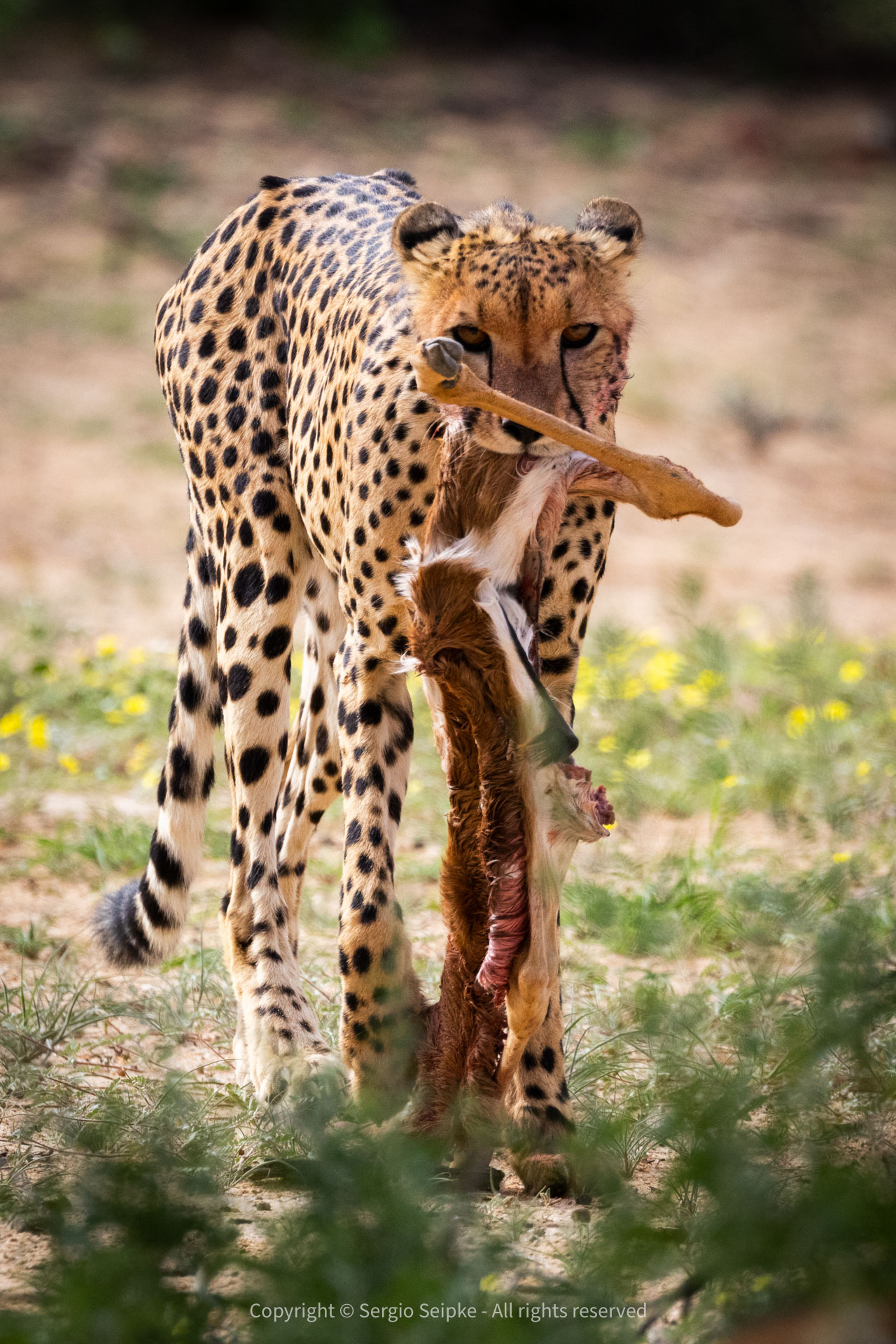
The drive back to Twee Rivieren proved just as eventful and we enjoyed excellent sightings of an adult female Martial Eagle perched in a Camelthorn next to the road, more Lanners, a displaying male Common Ostrich and a quick stop at Samevloeiing produced a lovely sighting of a drinking female Red-necked Falcon, possible the same individual from a pair we encountered here in 2018?
After lunch, most of the group decided on a siesta rather than another drive and I was also to finally do a presentation on the work that I am involved in that focuses on the conservation of vultures in Africa. Group members had purchased some meat and we arranged for side-dishes to host a braai at one of the chalets that evening that was interrupted by a wonderfully cooling, yet typically thundery downpour. The group was undeterred and we conducted a thorough debriefing receiving valuable feedback from group members after dinner before packing four our departure from the Kgalagadi the next morning.
Day 14 – Saturday, January 27 – Kgalagadi Transfrontier Park to Upington to Johannesburg
As agreed the evening before, we did a short drive over the dunes to the Auob-river, spotting numerous calling and displaying Norhern Black Korhaan as well as five individual perched Southern Pale Chanting Goshawks. Once in the Auob, we again enjoyed sightings of a number of Lanner Falcons and found the only Verreaux’s Eagle Owl of the trip perched in a large tree next to the road. Driving up the newly constructed track to a lookout over the Auob, we also enjoyed an interesting interaction with a number of female Springbok chasing off two Black-backed Jackal that seemingly posed a threat to their small lambs. A sighting of four Greater Kudu bulls and two more pairs of Pygmy Falcon rounded off our time in the Kgalagadi.
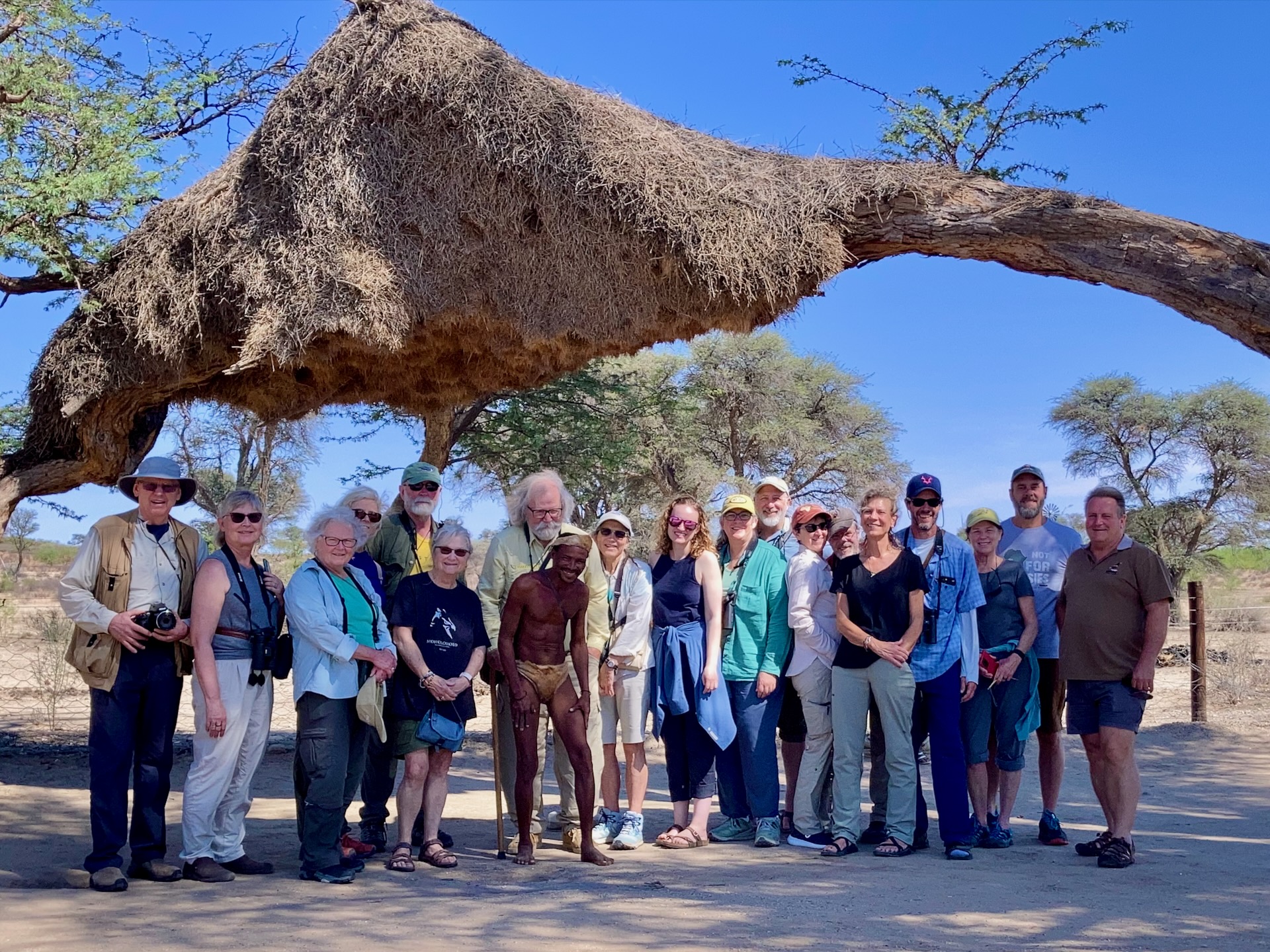
We returned to Twee Rivieren, packed and re-fueled and then started the long drive back to Upington, stopping at a San-craftsman who was selling handmade souvenirs next to the road. Needless to say, Piet Gooi enjoyed a good morning of business! We arrived at the Upington airport in good time and finally arrived back in Johannesburg at 2.30 pm where group members dispersed on a range of additional, self-arranged outings or returned back home after two weeks of long days, interesting weather and some great sightings.
Summary Statistics
Number of raptor species seen: 50
Number of bird species seen: 339
Number of mammal species seen: 44
Tour Gallery
Tour participants are welcome to download and use these images at leisure. If you have not participated in the tour and wish to use these images please contact us using the contact us form. Thank you!
(Roll pointer on images for additional information. Click on images to enlarge.)


